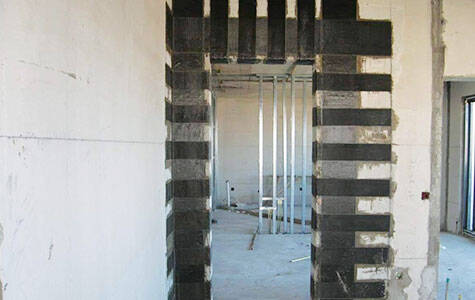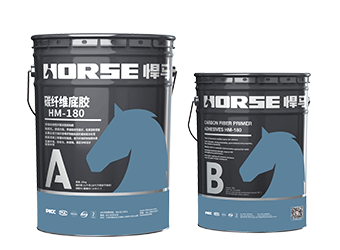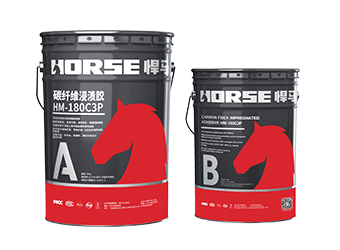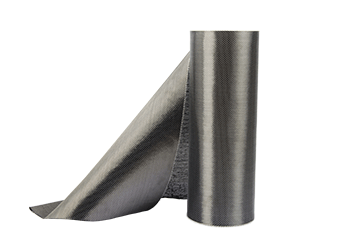Solutions
Horse Construction offers full range of structural strengthening materials with technical supports, documentation supports, products supports, project supports.
concrete strengthening with cfrp


At present, in the structural reinforcement and retrofitting market, the most widely used reinforcement technology is the pasting reinforcement of carbon fiber fabric(CFRP). The reason is certainly related to the advantages of this material itself. For example, it has light weight, high strength, acid and alkali resistance, does not occupy the original building space, simple construction, and almost no wet operation. Therefore, in various reinforcement and reconstruction occasions, there will always be many CFRP reinforcement schemes involved in the construction.
Carbon fiber cloth used for reinforcement of load-bearing structures is generally woven from unidirectionally arranged tows. The quality of its performance is not only related to the weaving method, but also mainly depends on the quality of the carbon fiber tow used. Therefore, when choosing carbon fiber cloth, we should first check whether the type, grade and model of the tow meet the requirements of the load-bearing structure.
Design regulations
1.1 General rules
When using carbon fiber sheets to reinforce the concrete structure, the carbon fiber sheets should be pasted on the surface of the components through the corresponding adhesive materials, so that the carbon fiber sheets can bear the tensile force and coordinate with the deformation of the concrete to receive the force together. Paste carbon fiber sheets in the tension area of beams and plate members for bending reinforcement, and the fiber direction should be consistent with the tension direction of the reinforcement. Adopt closed pasting, U-shaped pasting or side pasting for shear reinforcement of beam and column members, and the fiber direction should be perpendicular to the axial direction of the member. Adopt enclosed paste to strengthen the column for seismic reinforcement, and the fiber direction should be perpendicular to the column axis.
When there is a reliable basis, carbon fiber sheets can also be used to strengthen concrete structural members in other forms and other stress conditions. When using bonded carbon fiber sheets to reinforce concrete structures, the ultimate state design method based on probability theory should be used to carry out the ultimate state calculation of the bearing capacity and the check calculation of the normal service limit state according to the current relevant national standards. Reinforcement and concrete materials should determine their corresponding material strength design indicators according to the actual strength obtained from the test and the current relevant national standards. For carbon fiber sheet, the corresponding stress should be determined according to the linear elastic stress-strain relationship according to the strain when the component reaches the limit state. For carbon fiber sheets, the ultimate tensile strength of not less than 95% guarantee rate provided by the manufacturer shall be used as the standard value of tensile strength. The ultimate strain of carbon fiber sheets shall be the standard value of tensile strength divided by the elastic modulus.
When using pasted carbon fiber sheets to reinforce a structure or component, the possible impact on other components or other properties of the structure after the reinforcement should be considered. When using bonded carbon fiber sheets for structural reinforcement, it is advisable to remove the live load acting on the structure. If the reinforcement cannot be carried out under complete unloading conditions, the influence of the secondary force should be considered. During bending reinforcement and shear reinforcement, the actual concrete strength grade of the reinforced concrete structure and components shall not be lower than C15. When using closed-bonded carbon fiber sheets to reinforce concrete columns, the concrete strength level should not be lower than C10.
1.2 General structural requirements
When the carbon fiber cloth needs to be pasted around the corner of the component along its fiber direction, the radius of curvature of the outer surface at the corner of the component should not be less than 20mm. The lap length of the carbon fiber cloth along the fiber direction should not be less than 100mm. When multiple or multiple layers of carbon fiber cloth are used for reinforcement, the overlapping positions of each or each layer of carbon fiber cloth should be staggered. In order to ensure that the carbon fiber sheet works reliably with concrete, additional anchoring measures should be taken when necessary.


Construction regulations
The use of carbon fiber sheets to reinforce the concrete structure should be undertaken by a professional construction unit familiar with the technical construction process, and there should be a reinforcement plan and construction technical measures. The construction process should be as follows. Construction preparation-concrete surface treatment-preparation and painting of bottom resin-preparation of leveling materials and leveling treatment of uneven parts-preparation and painting of impregnating resin or paste resin-pasting of carbon fiber sheet. In the construction process of surface protection, in addition to considering the impact of ambient temperature and humidity on the curing of the resin, the supporting resin should also be used for construction or reasonable measures should be adopted to ensure the stability of the material. When the resin is formulated, it should be weighed according to the proportion specified in the product instructions and placed in a container, and stirred with a mixer until the color is uniform. There should be no oil and impurities in the mixing container and on the mixer. The mixing amount of the resin should be determined according to the actual environmental temperature on site, and the use time should be strictly controlled as required. Before construction, you should carefully read the design and construction drawings, draw up a construction plan and construction plan according to the actual conditions of the construction site and the concrete to be reinforced, and make pre-construction preparations for the used carbon fiber sheets, supporting resins, and machinery.
1) Surface treatment of materials. Degraded concrete such as peeling, looseness, honeycomb, corrosion, etc. should be removed from the surface of the reinforced component, and the concrete structure layer should be exposed, and the surface should be repaired and leveled with repair materials. Fill or seal the cracks according to the design requirements. The surface of the concrete to be pasted should be polished and smooth, and impurities such as surface scum and oil stains should be removed until the new surface of the concrete structure is completely exposed. The corner paste should be treated with lead angle and polished into an arc shape. The radius of the arc should not be less than 20mm. The concrete surface should be cleaned and kept dry.
2) Leveling of materials. Prepare leveling materials according to the process regulations provided by the product production department. Use leveling materials to fill the recessed parts of the concrete surface. There should be no edges and corners. The corners should be repaired into smooth arcs with leveling materials. The radius should not be less than 20mm. After the fingers are dry, proceed to the next process as soon as possible.
3) Paste carbon fiber cloth. First cut the carbon fiber cloth according to the size required by the design. The impregnating resin is prepared according to the technical regulations provided by the product manufacturer, and evenly applied to the sticking part. Lightly press the carbon fiber cloth to the position to be pasted by hand, and use a special roller to roll it along the fiber direction several times to squeeze out air bubbles so that the impregnating resin can fully penetrate the carbon fiber cloth without damaging the carbon fiber cloth during rolling. Repeat the above steps for multi-layer bonding, and apply the next layer of bonding as soon as possible after the impregnating resin on the fiber surface touches dry, and evenly spread the impregnating resin on the surface of the last layer of carbon fiber cloth.
4) Paste the carbon fiber board. First cut the carbon fiber board according to the size required by the design. And prepare impregnating resin according to the process regulations provided by the product manufacturer. Wipe the surface of the carbon fiber board clean until there is no dust. When two layers are to be pasted, both sides of the bottom carbon fiber board should be wiped clean. Then immediately apply the bonding resin. The resin layer should be convex and the average thickness should not be less than 2mm. Lightly press the carbon fiber board coated with the bonding resin on the position to be bonded by hand, and use a rubber roller to evenly and smoothly compact in the fiber direction, so that the resin is extruded from both sides to ensure that it is dense and without voids. When multiple carbon fiber panels are pasted in parallel, the gap between the two strips should not be less than 5mm. If two layers of carbon fiber boards need to be pasted, they should be pasted continuously. If they cannot be pasted immediately, the bottom carbon fiber board should be cleaned up again before starting to paste.
Sticking carbon fiber cloth(CFRP) to strengthen the structure can not only solve the technical problems urgently needed in the project, but also have better comprehensive benefits. The practice of the reinforcement project proved that in the reinforcement project, the construction period, quality, and cost are optimized by using the pasted carbon fiber cloth(CFRP) to strengthen the structure, and the structural force is reasonable, and the purpose of safety, reliability, economy and application is achieved. The engineering technical problems were solved, and better comprehensive benefits were received. Therefore, the application of carbon fiber cloth(CFRP) to strengthen concrete structures in engineering will become more and more extensive.
You can find anything here you are in need of, have a trust trying on these products, you will find the big difference after that.

Low viscosity, strong penetration carbon fiber primer for reinforced concrete surface to enhace the defect part

Good impregnation carbon fiber adhesive for applying carbon fiber reinforced polymer(CFRP) wrap for structural strengthening

High strength, unidirectional carbon fiber fabric pre-saturated to form a carbon fiber reinforced polymer (CFRP) fabric used to strengthen structural concrete elements.